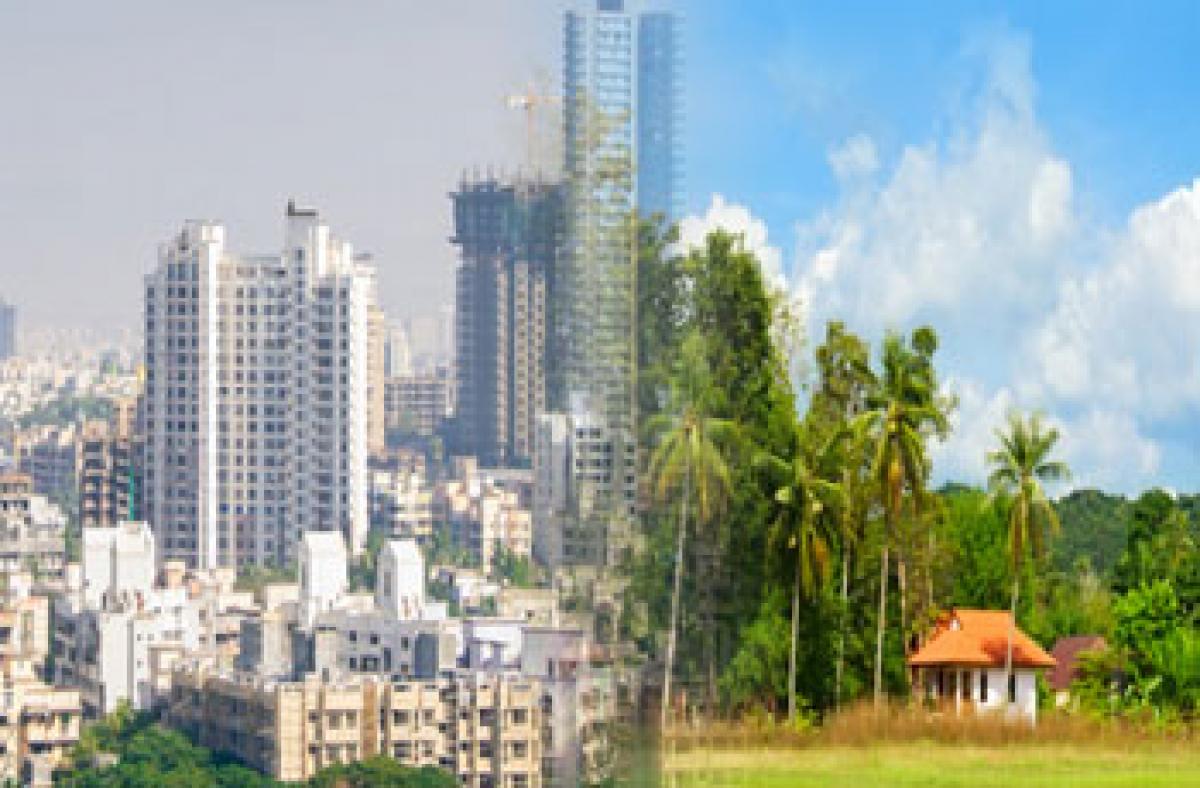Live
- CATL Chairman Doubts Elon Musk's 4680 Battery Will Succeed
- PM Modi Pays Tribute to Birsa Munda on His Birth Anniversary, Marks Janjatiya Gaurav Divas with Special Visit
- Actor Suriya’s ‘Kanguva’ Leaks Online Hours After Theatrical Release
- Chandrababu's Andhra Pradesh Investment & Job Creation Plans (BN) for Industrial Growth
- Shankar’s daughter Aditi Shankar set to debut in Tollywood
- AR Rahman’s ‘Aadujeevitham’ Music Nominated Twice at 2024 Hollywood Awards
- NBK’s action drama ‘Daaku Maharaaj’ unveiled with power-packed teaser
- Nehru’s services unforgettable : Veerlapalli
- ROB ready by March-end
- 30.1-9-49-10 – Anshul Kamboj picks up all 10 wickets in Haryana vs Kerala Ranji Trophy match
Just In

The Modi government will develop 300 rural growth clusters, called \'Rurban Clusters\', across the country to unearth their latent potential and accelerate growth of rural India, a senior official said here.
 'Rurban Clusters' would comprise several contiguous villages which have economic capability but need supplementary economic, social and physical support to transform the image of rural India. This would be achieved by creating infrastructure ranging from mobile health units to encouraging digital literacy along with agro-processing and agri services units
'Rurban Clusters' would comprise several contiguous villages which have economic capability but need supplementary economic, social and physical support to transform the image of rural India. This would be achieved by creating infrastructure ranging from mobile health units to encouraging digital literacy along with agro-processing and agri services units
The Modi government will develop 300 rural growth clusters, called 'Rurban Clusters', across the country to unearth their latent potential and accelerate growth of rural India, a senior official said here.
The 'Rurban Clusters' would comprise several contiguous villages which have economic capability but need supplementary economic, social and physical support to transform the image of rural India. This would be achieved by creating infrastructure ranging from mobile health units to encouraging digital literacy along with agro-processing and agri services units, the official said.
"The 'Rurban Clusters' scheme would be implemented under the newly-launched Shyama Prasad Mukherji Rurban Mission (SPMRM) with an outlay of Rs 5,142.08 crore (almost $580 million) in the next five years - 2015-16 to 2019-20," said Aparajita Sarangi, Joint Secretary in the Union Rural Development Ministry.
"The actual works to form the 'Rurban Clusters' would start with the preparation of an Integrated Cluster Action Plan (ICAP) by January 10," Sarangi said here at a two-day meeting of senior officials of nine hill states - seven from the northeast (except Sikkim), Himachal Pradesh and Uttarakhand.
She said that in the first phase 100 'Rurban Cluster' would be formed in selective comparatively backward districts. "These clusters would be developed by provisioning of economic activities, developing skills of people and local entrepreneurship besides providing infrastructure facilities," the official added.
The official document of the SPMRM, which was approved by the Union Cabinet chaired by Prime Minister Narendra Modi on September 16, said that India is still predominantly rural, with 833 million people living in rural areas, constituting almost 68 percent of the total population.
It said that the rural population had grown two per cent during 2001-11, with an increase in the absolute number of villages by 2,279 units during this period.
The document said that a 'Rurban cluster' would be a group of geographically adjoining villages with a population of about 25,000 to 50,000 in the plains and coastal areas and a population of 5,000 to 15,000 in desert, mountainous or tribal areas. The road map of the SPMRM said that the state governments would select gram panchayats and cluster of geographically contiguous villages to form a 'Rurban Cluster'.
The components to be envisaged as desirable parts in each cluster include skill development training linked to economic activities, agro-processing, agri-services like storage and warehousing, fully equipped mobile health units, upgraded schools, sanitation, provision of piped water supply, solid and liquid waste management, village streets and drains, street lights, inter-village road connectivity, public transport, cooking gas connections, digital literacy, Citizen Service Centres for electronic delivery of citizen centric services and e-gram connectivity.
Components pertaining to agriculture and allied activities would be required to be given special emphasis while developing the 'Rurban Clusters'. Sarangi said that the Rural Development Ministry would release Rs 35 lakh per 'Rurban cluster' for preparing the ICAP. The central funds would be released in three installments at appropriate stages.
Tripura Chief Minister Manik Sarkar on Tuesday inaugurated the two-day regional workshop. Welcoming the SPMRM, Sarkar said: " 'Rurban Cluster' is a replica of PURA (Provision of Urban Amenities to Rural Areas) earlier conceptualised by former President A P J Abdul Kalam in 2003." "The Centre should implement any scheme with all sincerity. The northeastern region has everything. Its boundaries with five countries, including China and Bangladesh, could be a huge economic opportunity if properly planned," Sarkar added.
By:Sujit Chakraborty

© 2024 Hyderabad Media House Limited/The Hans India. All rights reserved. Powered by hocalwire.com







